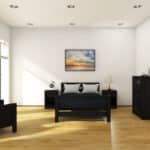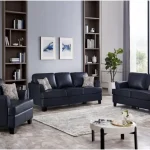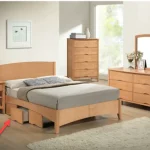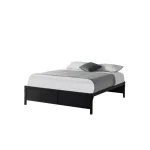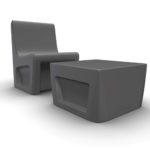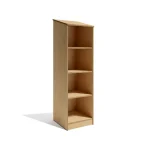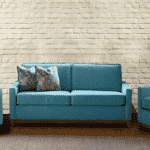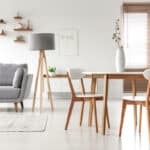How to Maximize ROI in Transitional Housing Furniture
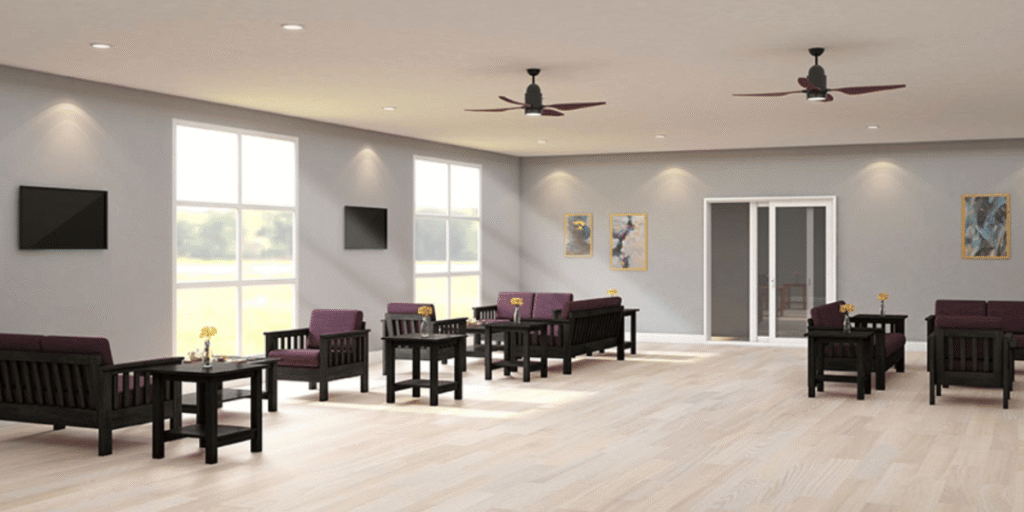
Transitional housing programs face a unique balancing act: they must create spaces that feel welcoming and restorative while also standing up to constant, high-impact use. For organizations in behavioral healthcare and human services, success depends on choosing furniture that promotes well-being, lasts over time, and stays within tight budget constraints.
Maximizing ROI in this setting requires a careful evaluation that extends beyond just initial costs. It involves smart planning, strategic material selection, and proactive vendor relationships. This guide shows you how to make smart furniture decisions that benefit residents and protect your budget.
Understanding the Demands of Transitional Housing
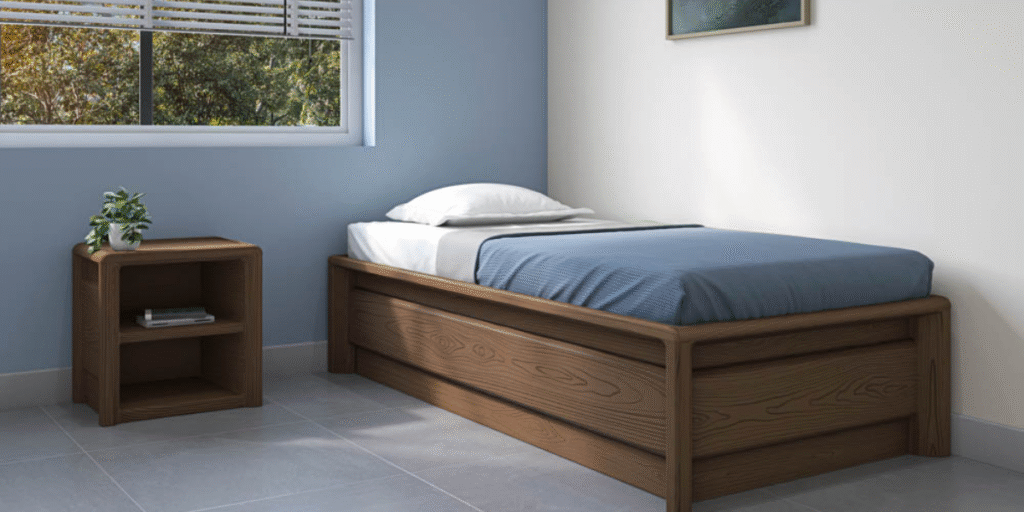
Transitional housing is not your average residential environment. These facilities operate around the clock and often accommodate high turnover among residents. The furniture used here needs to handle unique pressures—emotionally, functionally, and structurally.
High Turnover Rates and 24/7 Use
Unlike traditional homes, transitional housing furniture must endure near-constant use. Beds, seating, and tables are used daily by rotating residents and on-site staff. This frequent use means that wear and tear happen quickly if the furniture isn’t built to last.
To ensure long-term value, facilities should:
- Prioritize commercial-grade durability: Choose furniture built to handle 24/7 use without compromising comfort or quality.
- Select secure, stable designs: Avoid items prone to loosening or breakage to extend product lifespan.
- Look for replaceable parts: Opt for furniture that allows easy component replacement when needed to minimize downtime and cost.
Need for Institutional Durability
Furniture in transitional housing must strike a careful balance. It needs to appear residential and comforting, but must also meet institutional durability standards.
High-use environments benefit from:
- Reinforced frames: Use metal or high-grade wood to boost furniture strength and reduce damage over time.
- Scratch- and dent-resistant finishes: Choose finishes that maintain appearance despite heavy use.
- Durable joinery: Select construction that resists loosening from frequent movement and repositioning.
Well-designed transitional housing furniture ensures long-term use without looking sterile or institutional.
Emotional and Behavioral Health Considerations
Behavioral health programs require specialized furnishings. Behavioral health furniture plays a pivotal role in creating spaces where residents feel safe, respected, and comfortable.
Key features include:
- Rounded corners and seamless edges: Minimize risk and promote safety for residents prone to agitation or self-harm.
- Weighted or anchorable designs: Prevent furniture from being moved or misused, enhancing room security.
- Soft tones and textures: Create a soothing environment that encourages emotional regulation and comfort.
These features help residents focus on healing while enhancing the therapeutic environment.
What Impacts ROI in Transitional Housing Furniture?
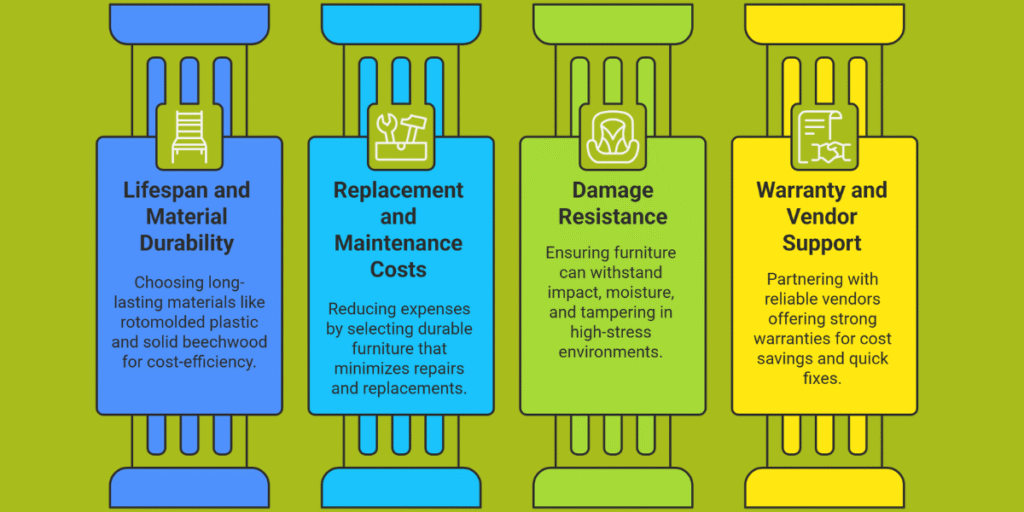
Return on investment (ROI) includes more than upfront costs. Maximize value by considering durability, maintenance, vendor relationships, and replacement timelines.
Lifespan and Material Durability
Choosing long-lasting materials is a cornerstone of cost-efficiency. Strong, resilient materials like rotomolded plastic and solid beechwood can withstand years of high-use conditions.
Benefits include:
- Reduced frequency of replacements: High-durability materials mean fewer replacements over time, saving money.
- Lower lifetime repair costs: Quality construction minimizes the need for frequent maintenance or fixes.
- Greater structural integrity under stress: Strong materials hold up under daily wear and high-occupancy environments.
Furniture crafted from these materials consistently outperforms cheaper alternatives, especially in transitional housing furniture applications.
Replacement and Maintenance Costs
Every repair or replacement adds cost and disrupts services. Durable behavioral health furniture helps facilities avoid unnecessary spending.
To reduce long-term costs:
- Use maintenance-resistant materials: Choose finishes and components that stand up to wear and require minimal upkeep.
- Select pieces with replaceable parts: Ensure that damaged components can be easily swapped without requiring the replacement of the entire item.
- Implement a maintenance calendar: Schedule routine inspections to identify and resolve small issues early, preventing costly repairs later.
Proactive choices result in lower repair bills and more consistent resident experiences.
Damage Resistance (Impact, Moisture, Tamper-Proofing)
High-resilience design features significantly improve ROI. Consider furniture that can resist impact, moisture exposure, and tampering—all of which are common in transitional settings.
Look for:
- Tamper-resistant fasteners: Prevent unauthorized disassembly and enhance resident safety.
- Waterproof or fluid-proof coatings: Protect furniture surfaces from moisture damage and simplify cleaning.
- Internal supports to absorb shocks: Strengthen structural durability to withstand heavy impact and daily use.
These characteristics are particularly vital in behavioral health furniture used in unpredictable, high-stress environments.
Warranty and Vendor Support
Working with reliable wholesale furniture vendors who offer strong warranties can make a significant difference. A good warranty saves money and hassle, while a trusted vendor relationship ensures quick replacements or fixes.
Key factors:
- Multi-year coverage on key components.
- Access to discontinued or replacement parts.
- Support during bulk orders and installation.
Developing vendor partnerships is one of the best ways to stretch your bulk furniture budget over time.
Key Features to Look For
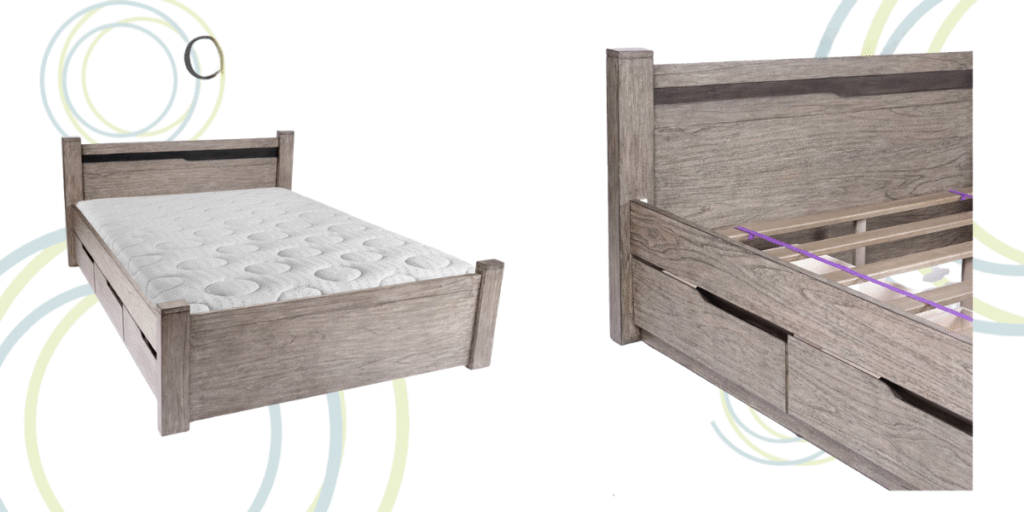
Some furniture features directly affect durability and usability. Identifying these details can help guide your investment strategy.
Seamless Construction (Tamper-Resistant)
Seamless designs offer fewer opportunities for damage or tampering. This is particularly important in behavioral healthcare settings where safety is a priority.
Advantages include:
- Easier to clean.
- Less prone to internal damage.
- Improved resident safety.
Tamper-resistant behavioral health furniture also helps staff maintain a safer environment.
Easy-to-Clean Surfaces
In transitional housing, hygiene is essential. Selecting transitional housing furniture made from non-porous, wipeable materials supports cleanliness and infection control.
Features to seek:
- Mold- and mildew-resistant coatings.
- Smooth finishes that don’t trap debris.
- Low-maintenance surface care requirements.
Easy cleaning reduces labor costs and supports resident health.
Modular and Space-Saving Designs
Facilities often need to reconfigure rooms quickly. Choosing modular or stackable bulk furniture adds flexibility.
Benefits include:
- Faster room resets between residents: Modular designs enable quick room turnover and setup with minimal effort.
- Simplified storage: Stackable or collapsible furniture makes it easier to store unused items efficiently.
- Adaptability to changing space needs: Flexible configurations allow furniture to be repurposed as program demands evolve.
These designs are ideal for transitional environments where flexibility is key.
Dual-Purpose Furniture (e.g., Storage Beds)
Maximizing floor space is a common challenge. Multi-functional transitional housing furniture helps reduce clutter without sacrificing usability.
Examples include:
- Beds with built-in drawers: Combine sleep and storage in one footprint-saving solution.
- Ottomans with internal storage: Offer flexible seating that discreetly stores personal items.
- Tables that double as workstations: Create multi-functional areas for dining, working, or therapy activities.
Integrated designs improve space management and resident satisfaction.
Best Materials for Long-Term Value
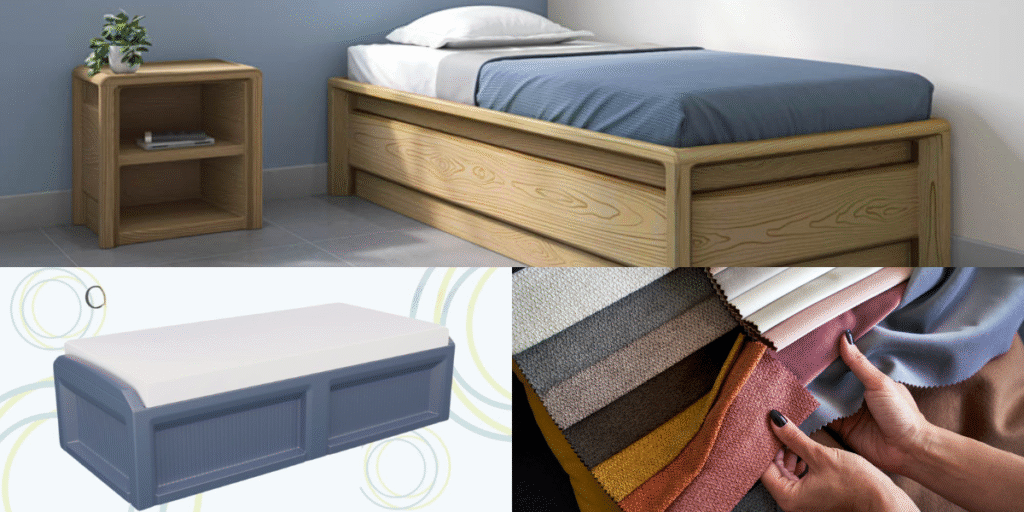
Material choice has a profound impact on ROI. Investing in the right materials upfront ensures better durability and performance.
Rotomolded Plastic
This high-impact plastic is ideal for behavioral health furniture. It’s molded in one piece, making it virtually indestructible.
Advantages:
- Fluid-proof and easy to clean.
- Resistant to cracking, denting, or splintering.
- Long-term resilience in demanding settings.
Rotomolded products are among the most dependable options for transitional environments.
Metal-Reinforced Frames
Reinforcing furniture with metal adds structural strength and prevents frame breakdown.
Ideal uses:
- Beds and sofas in high-turnover rooms.
- Dining chairs and tables.
- Any transitional housing furniture placed in communal areas.
These reinforcements protect long-term value and increase user safety.
Stain-Resistant Fabrics for Common Areas
Public spaces require behavioral health furniture that can resist spills and wear while remaining attractive.
- All Fabrics & Vinyls: A wide selection of all Fabrics & vinyl options that balance comfort, style, and long-term performance.
- Moisture Barrier Fabrics: Designed to prevent liquid absorption, these fabrics help maintain hygiene in high-use areas.
- Vinyls: Durable and easy to clean, vinyl options are ideal for spaces requiring regular sanitation.
- Wovens: Wovens offer a soft, residential feel while still supporting moderate wear and tear.
- Value Options: Value Options Budget-conscious choices that still deliver acceptable durability and appearance.
- Fabric Grade Chart: Use the fabric grade chart to compare and select upholstery based on expected usage, care needs, and cost-effectiveness.
Look for:
- Moisture-barrier upholstery: Prevents liquids from seeping in, making cleaning quick and effective.
- Cleanable textiles that hide stains: Maintain appearance with minimal maintenance, ideal for busy communal areas.
- Fade resistance for sun-exposed areas: Keeps furniture looking new even in high-light environments.
These materials reduce the frequency of cleanings and replacements.
Ligature Resistant
Ligature-resistant furniture is essential for reducing risk in behavioral health and transitional housing environments.
Key applications:
- Bed frames with no tie-off points.
- Secure wall-mounted desks and shelving.
- One-piece molded chairs without gaps or openings.
Ligature-resistant transitional housing furniture helps ensure resident safety while maintaining comfort and usability.
Bed Bug Resistant Furniture
Bed bug Resistant furniture is a must in high-turnover environments like transitional housing. These specially designed pieces prevent infestation and simplify maintenance.
Features to look for:
- Sealed seams and solid construction to eliminate hiding spots.
- Materials that withstand frequent cleaning and inspection.
- Bed frames and case goods are designed to deter pest nesting.
This type of transitional housing furniture helps protect residents and staff while preserving long-term value.
Balancing Cost and Quality
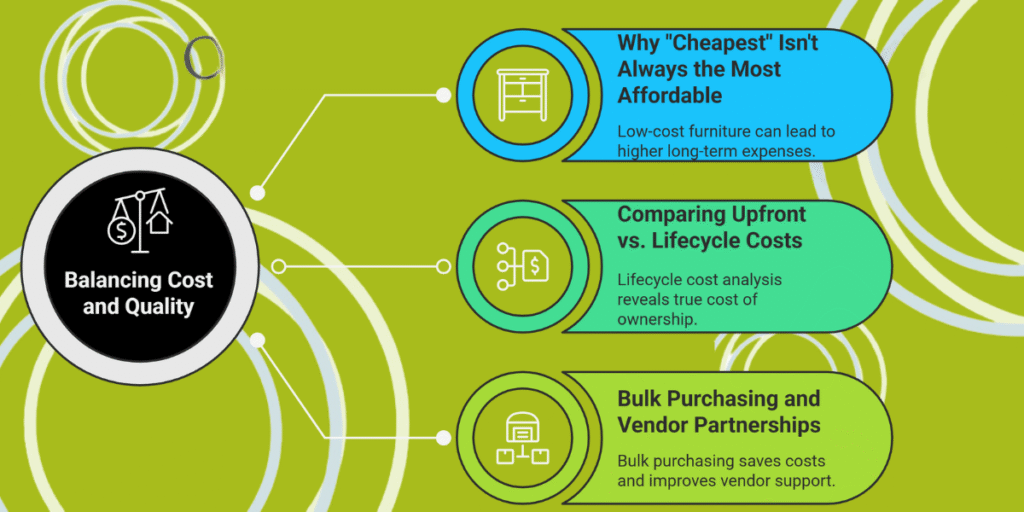
Managing a budget doesn’t mean sacrificing durability. To get the best value, it’s critical to look beyond price tags and assess total lifecycle cost.
Why “Cheapest” Isn’t Always the Most Affordable
Low-cost furniture can lead to high long-term expenses if it wears out quickly. Investing in better materials and construction often saves money over time.
Key considerations:
- Frequency of replacement.
- Repair and downtime costs.
- Resident safety and satisfaction.
Transitional housing furniture should offer both affordability and resilience.
Comparing Upfront vs. Lifecycle Costs
Lifecycle cost analysis is essential when budgeting for bulk furniture. A product that lasts 10 years will cost less annually than one replaced every two years.
When comparing:
- Divide the price by the expected lifespan.
- Add projected maintenance costs.
- Factor in disruptions caused by replacements.
This method reveals the true cost of ownership.
Bulk Purchasing and Vendor Partnerships
Buying in bulk through wholesale furniture channels brings significant cost savings and improved service.
Advantages:
- Lower unit pricing.
- Consistency across rooms or facilities.
- Easier reordering and warranty claims.
A strong vendor partnership also simplifies planning and support.
Embrace Versatility and Adaptable Design
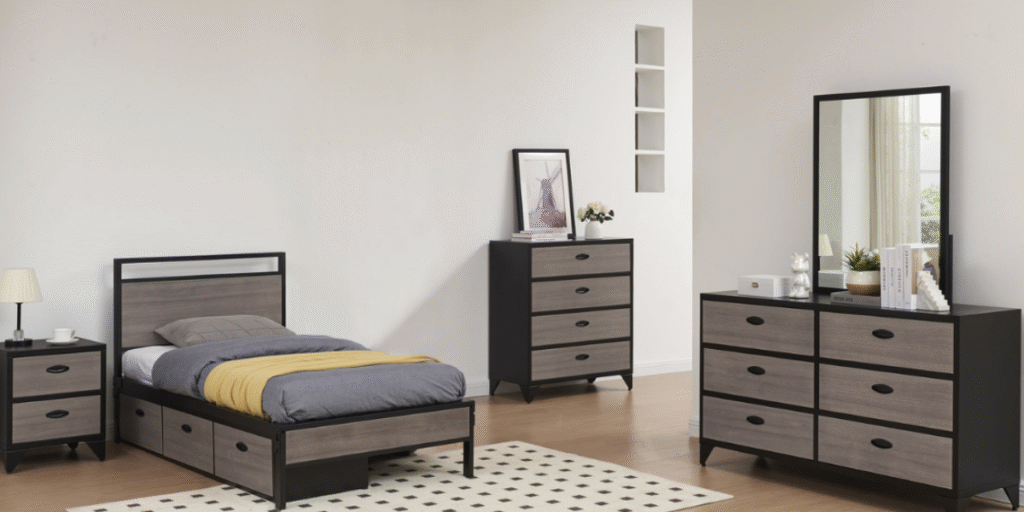
Versatile furniture adapts to changing needs, layouts, and resident populations. Choosing multi-purpose pieces helps housing programs stay flexible and efficient.
Choose Multi-Purpose Furniture
Multi-functional transitional housing furniture delivers better value per square foot.
Examples:
- Convertible seating for sleeping or lounging.
- Storage-integrated beds or dressers.
- Desks that double as dining tables.
These solutions support dynamic, space-conscious living.
Consider Adjustable Features
Furniture with adjustable elements, like height or mobility, can transform room functionality with minimal effort.
Benefits:
- Locking casters for quick reconfiguration.
- Flip-top tables for compact storage.
- Modular components for layout changes.
Such designs are especially useful in bulk furniture deployments across varying room types.
Focus on Resident Well-Being and Satisfaction
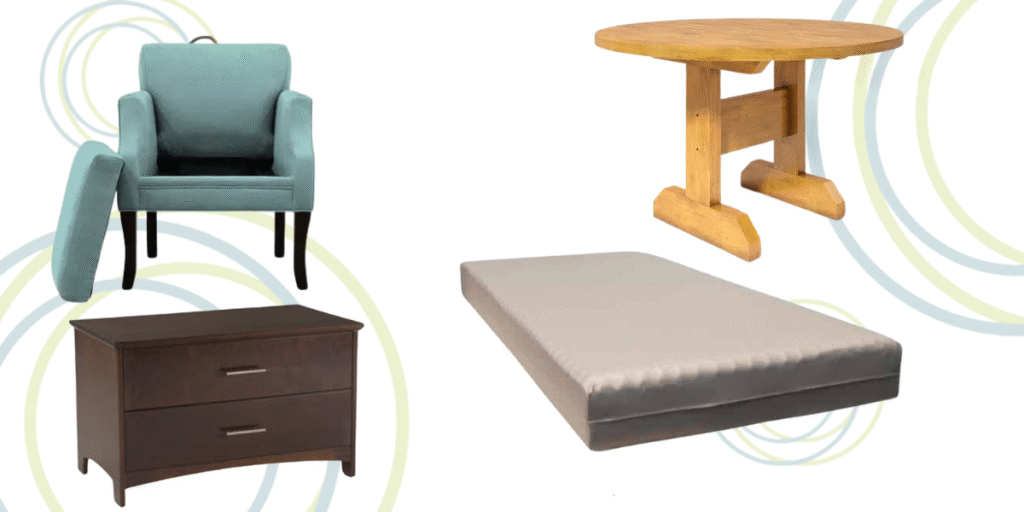
Resident satisfaction influences the success of transitional programs. Comfortable, attractive furniture supports both physical health and emotional recovery.
Provide Comfortable and Functional Furniture
Furniture must serve its purpose and feel welcoming. Well-designed transitional housing furniture encourages residents to rest, relax, and heal.
Tips:
- Choose ergonomic seating.
- Include supportive mattresses.
- Offer accessible storage.
Comfort enhances compliance and improves outcomes.
Create Welcoming and Engaging Communal Spaces
Common areas should foster connection and emotional safety. Behavioral health furniture in these spaces should invite interaction and comfort.
Design elements:
- Soft seating clusters.
- Communal dining with movable tables.
- Neutral, calming color schemes.
A positive environment helps reduce isolation and supports recovery goals.
Implement Efficient Maintenance and Repair Practices
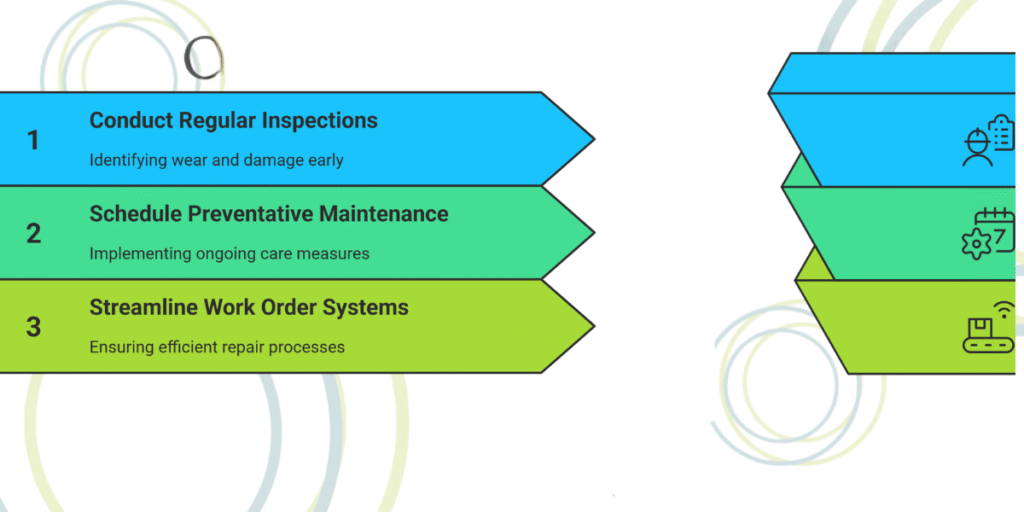
Being proactive about maintenance can do wonders for your furniture, helping it last longer and maintain its quality.
Conduct Regular Inspections
Regular check-ins help catch wear and damage early. This is especially important for high-use transitional housing furniture.
Suggestions:
- Create a monthly inspection checklist.
- Prioritize high-traffic areas.
- Document issues for warranty claims.
These routines prevent small issues from escalating.
Schedule Preventative Maintenance
Ongoing care keeps furniture performing well. Preventative measures include tightening joints, spot cleaning, and sealing surfaces.
Benefits:
- Longer functional lifespan.
- Fewer emergency repairs.
- Reduced long-term costs.
An annual service calendar is a worthwhile investment.
Streamline Work Order Systems
A clear process for repairs ensures accountability and speed. Partnering with wholesale furniture vendors can improve turnaround.
Best practices:
- Use digital tracking tools.
- Assign a staff point person.
- Establish vendor communication channels.
These systems keep bulk furniture assets functioning and available.
Consider the Long-Term Value
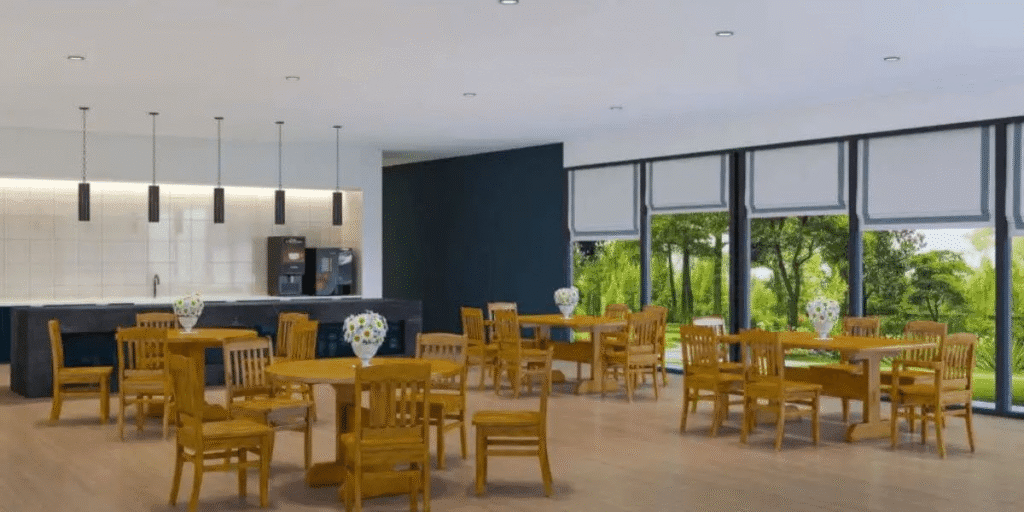
Every purchasing decision impacts future operations. Thinking long-term helps ensure your investment aligns with both your mission and your budget.
Focus on Quality Over Quantity
It’s better to purchase fewer high-quality pieces than many low-quality ones. Durable transitional housing furniture will save money and enhance the resident experience.
Prioritize:
- Proven brands with track records.
- Industry-specific product lines.
- Warranty-backed options.
Smarter purchasing yields stronger ROI.
Explore Furniture Leasing Models
Leasing bulk furniture from a wholesale furniture provider offers flexibility, especially during expansion or transition periods.
Advantages:
- Predictable monthly expenses.
- Access to updated designs.
- Easier scaling across sites.
Leasing lets programs maintain consistency without large capital outlays.
How We Help Maximize ROI at Furniture Concepts

Furniture Concepts supports behavioral health and human service organizations with practical, long-lasting solutions that enhance their operations. Our products deliver long-term value, resident comfort, and cost-efficiency.
We specialize in transitional housing furniture that supports recovery and stability. Our catalog includes weighted, fluid-proof, and modular pieces ideal for 24/7 environments.
Our team helps you choose, plan, and install your wholesale furniture order. We align each piece with your program goals and physical space requirements.
With over 25 years of experience, our behavioral health furniture has proven its value across the country. Our warranties and long-term service ensure you get the most from every investment.
Conclusion
Maximizing ROI in transitional housing furniture starts with understanding the demands of high-use environments and selecting features that enhance durability, safety, and flexibility. From choosing the right materials like rotomolded plastic and stain-resistant fabrics to implementing preventative maintenance and efficient procurement strategies, every step contributes to long-term success.
By investing in dual-purpose, modular, and ligature-resistant behavioral health furniture, organizations can reduce operational costs, improve resident well-being, and adapt to evolving needs. Partnering with experienced wholesale furniture vendors and leveraging bulk purchasing power only strengthens that return.
At Furniture Concepts, we’re here to help you make confident, cost-effective decisions. Contact us today to explore our full range of purpose-driven transitional housing furniture solutions.

